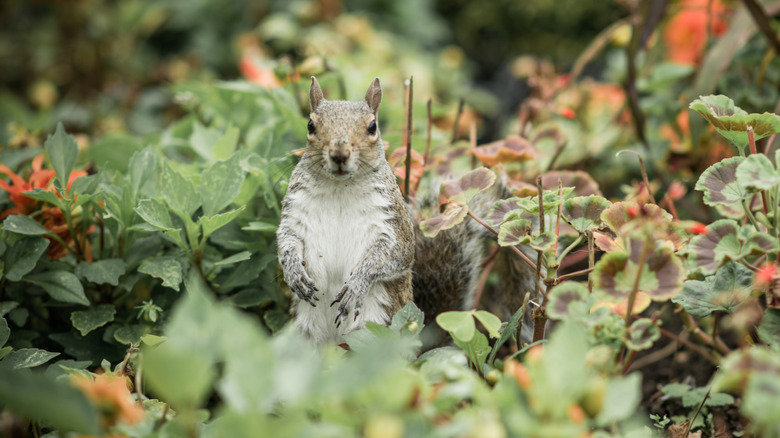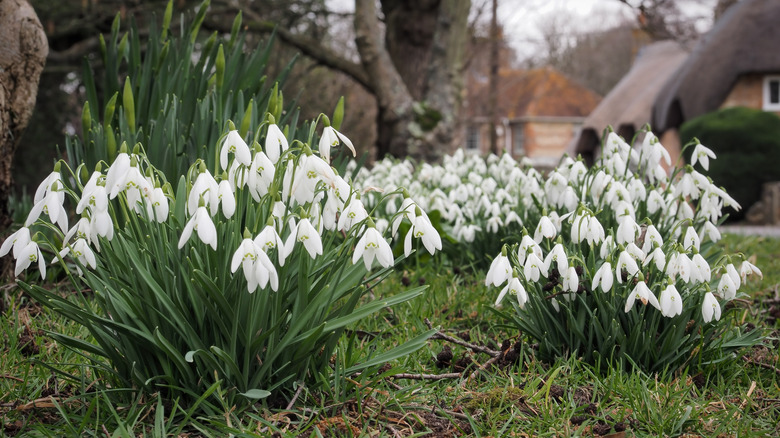The Beautiful White Flower That May Help Keep Squirrels Out Of Your Garden
Squirrels are cute when they are not wreaking havoc on your yard. Besides the damage they can cause to trees, shrubs, and flowers, they can also chew through wood and plastic, which means your outdoor furniture may be at risk, too. Luckily, there is a flower that can discourage squirrels from raiding your garden that is as effective as it is beautiful: Galanthus.
These stunning white flowers are known as snowdrops, and though there are multiple species, the common kind is scientifically called Galanthus nivalis. There are certain smells that squirrels dislike, and the strong scent of Galanthus is one of them. Though the flower may not be notably fragrant to humans, squirrels have a heightened sense of smell that they use to detect potential danger. Galanthus qualifies as a danger to squirrels since its bulbs, flowers, and leaves are toxic to them due to the alkaloid galantamine. However, they are also toxic to children and pets, so parents and pet owners should reconsider using this squirrel deterrent.
Consuming galantamine causes gastrointestinal symptoms including nausea, so if a squirrel manages to ignore the scent enough to take a nibble, the nauseating bodily feedback will teach them to avoid it in the future. While the idea of poisoning a squirrel does not sound like a humane way to keep critters out of your yard, the good news is they almost never eat Galanthus unless they are desperate for food. They tend to avoid it instead, no poisoning required.
How to grow Galanthus flowers
Galanthus is hardy to zones 3 through 7, and true to its snowdrop nickname, it thrives even in cold weather. It requires a cold spell below 20ºF to germinate and may not live as long in warmer environments. Bulbs should be planted in the fall, around 2 to 3 inches deep into the soil and spaced 3 inches apart. The gorgeous white flowers will be among the first to bloom in the spring.
Healthier snowdrop flowers make for stronger squirrel repellent, so proper care is crucial. Galanthus thrives in rich, well-drained soil and prefers a neutral soil pH, though it is not picky if the soil is not strongly acidic or alkaline. The low-maintenance flower needs a medium amount of watering that keeps it slightly moist but not waterlogged and prefers to be planted in partial shade or full sun.
To maximize the squirrel repellent potential of Galanthus, treat the placement of the bulbs like you are building a barrier to keep out squirrel damage. For instance, if the rodents have been wreaking havoc in your vegetable garden, consider planting bulbs around the perimeter to create a floral fence. Galanthus flowers on their own may not be enough to get squirrels to move along. Your best bet is to combine them with other methods to keep trespassing squirrels out of your yard.

